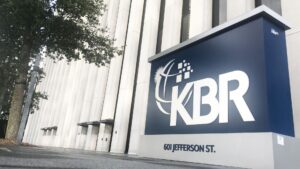Exploring KBR Inc: Insight and Activism within a Dynamic Market
Company Overview: KBR Inc (KBR)
KBR Inc, headquartered in Houston, Texas, is a notable player in the global landscape of scientific, technological, and engineering solutions. Since its inception, KBR has specialized in delivering comprehensive support to government agencies and private corporations around the world. The company is primarily segmented into two areas: Government Solutions (GS) and Sustainable Technology Solutions (STS).
Government Solutions (GS) vs. Sustainable Technology Solutions (STS)
The Government Solutions branch focuses on lifecycle support for critical missions in defense, intelligence, space, and aviation, catering to military and governmental needs, particularly in the U.S., U.K., and Australia. Conversely, the Sustainable Technology Solutions division emphasizes high-margin growth areas such as ammonia and syngas production, petrochemicals, and clean refining—sectors increasingly vital in today’s eco-conscious society.
With a current stock market capitalization of $7.91 billion (approx. $59.36 per share), KBR finds itself navigating a challenging yet opportunistic marketplace, driven by technological innovation and changing government spending patterns.
The Activist Influence: Irenic Capital Management
KBR is currently under the lens of Irenic Capital Management, an activist investment firm with emerging influence since its founding in 2021. Irenic’s strategy focuses on engaging with the management of companies to stimulate growth through structural changes. Their most recent initiative involves advocating for the separation of KBR’s STS and GS segments, which they believe will unlock significant shareholder value.
Current Market Dynamics and Strategic Review
As KBR faces pressure from activist investors like Irenic, the broader market indicates a potential downturn in government spending due to forthcoming political changes, particularly related to the Trump administration’s focus on slashing federal budgets. Such speculation caused KBR’s stock to decline over 18% following the election, even as analysts argue that the company remains robust enough to weather these changes.
It’s essential to note that while the GS segment accounts for a significant 75% of KBR’s revenue, it contributes less than half of the operating income. The real growth story is in the STS segment, which has seen revenue growth averaging 16.7% since FY21 with margins around 20%. This disjunction between growth potential and current market perception illustrates the benefits of a potential separation.
The Case for Separation
Advocating for the separation of KBR’s segments, Irenic makes several compelling arguments:
- Tailored Focus: Individual business units would better attract their respective shareholder bases and foster focused management strategies.
- Financial Efficiency: Separate entities could streamline operations, potentially saving around $50 million in corporate overhead costs that would otherwise affect the bottom line.
- Enhanced Valuation Multiples: Currently trading at approximately 11.5 times its enterprise value to last twelve months’ adjusted EBITDA, separating the two units could position STS to trade closer to similar high-margin peers, which command 14-15 times EBITDA.
Looking Ahead: Opportunities and Risks
As we explore the potential trajectory for KBR, it’s worth noting the looming possibility of a proxy fight should KBR’s management remain resistant to Irenic’s calls for a strategic review by February 14, 2025. The investor group gained traction rapidly, and the broader sentiment among shareholders appears to be shifting favorably towards their agenda—separating the two critically different business segments.
In a parallel scenario, KBR finds itself at a crossroads similar to Honeywell, which underwent a strategic review following activist pushback, leading to speculations of possible acquisitions, including KBR itself. The potential synergies with other companies, enhanced by Irenic’s connections with influential firms in the activist space, might yield significant merger or acquisition opportunities down the line.
Final Thoughts
At Extreme Investor Network, we emphasize the importance of uncovering hidden value within companies such as KBR. The evolving landscape, characterized by activist involvement and shifting governmental fiscal strategies, presents an intriguing narrative for investors. While challenges loom in the near future, the structural changes proposed may very well reposition KBR for long-term growth, aligning with shareholder interests and market demands.
Stay tuned as we continue to monitor KBR’s journey and provide insight into strategic opportunities—and don’t forget to explore more unique perspectives and market analyses through our in-depth coverage at Extreme Investor Network!

